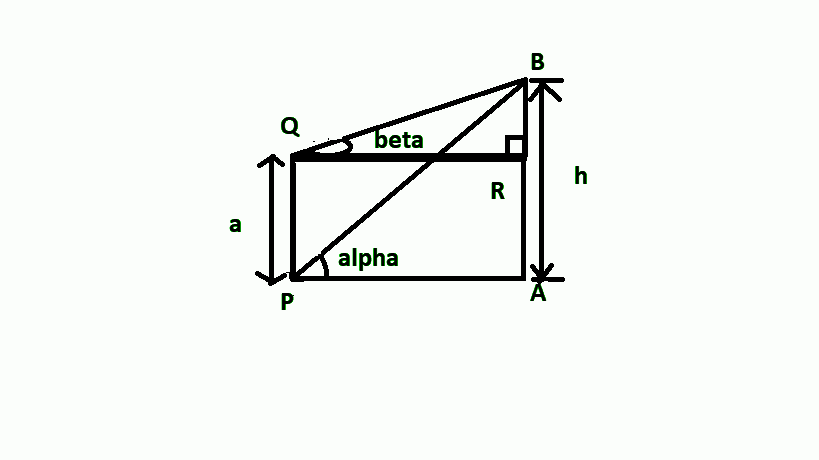Question
Question: PQ is a post of height \(a\), and A is a tower at some distance; \(\alpha \)and \(\beta \) are the a...
PQ is a post of height a, and A is a tower at some distance; αand β are the angles of elevation of B, the top of tower, at P and Q respectively. The height of the tower is
A. sin(α−β)asinαcosβ
B. sin(α−β)acosαcosβ
C. sin(α−β)asinαsinβ
D. None of these
Solution
Hint: Draw the figure according to the information provided in the question and they analyse it to solve the question.
Complete step-by-step answer:
According to the question, PQ is a post of height a, and AB is the tower.
Let us assume the height of the tower be h.
The figure for the above question is shown below-

From the figure we can see,
PQ = AR = a.
Therefore, we can also say that, BR = AB -AR – (1)
Now, we know, AB = h (assume)
Therefore, substituting AB = h and AR = a in equation (1), we get-
BR=h−a−(2)
Now, in right angled triangle BAP,
tanα=APAB ∴tanα=APh ⇒AP=tanαh−(3)
Also, in right angle triangle BRQ,
tanβ=QRBR ∴tanβ=APh−a[∵AP=RQ] ⇒AP=tanβh−a−(4)
From equation (3) and (4), we can say,
tanβh−a=tanαh ⇒htanα−atanα=htanβ ⇒h(tanα−tanβ)=atanα ⇒h=tanα−tanβatanα
We can write, tanα=cosαsinα,tanβ=cosβsinβ
So, h will be equal to, h=cosαsinα−cosβsinβacosαsinα=acosαsinα×sinαcosβ−cosαsinβcosαcosβ ⇒h=sin(α−β)asinαcosβ
Hence, the height of the tower is, h=sin(α−β)asinαcosβ.
Therefore, the correct option is A.
Note- Whenever such types of questions appear, always write the information given in the question, and using that make a figure, find the value of the tangent of angle α,β, and then solve further by making required substitutions.
